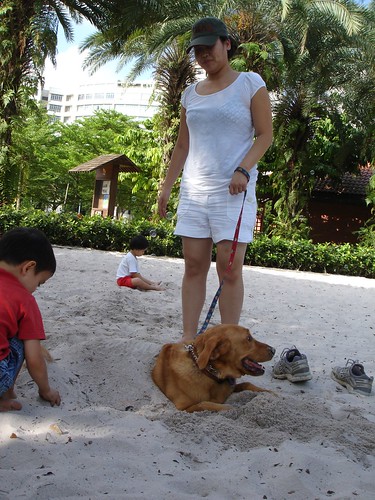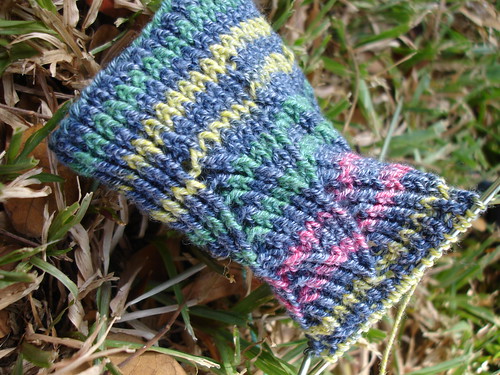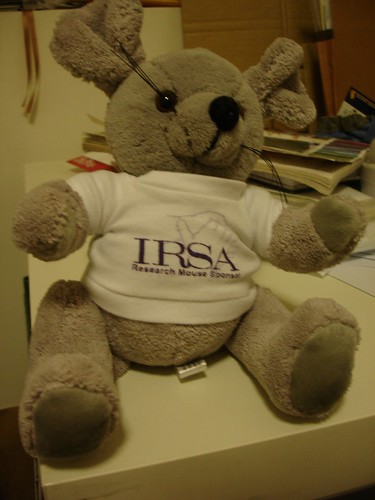An article just published in Science illustrates that the physical symptoms of Rett Syndrome can be reversed in adult female mice!
Surprise Experiment Suggests It May Be Possible to Treat Rett Syndrome
02-08-2007 2:38 PM
By LAURAN NEERGAARD, AP Medical Writer
WASHINGTON — Scientists are raising the first hope of recovery from an autism-like disease that leaves thousands of girls unable to talk or walk _ with an experiment that erased symptoms of the disorder in genetically engineered mice.
Thursday’s report challenges the long-held belief that the brain damage from Rett syndrome is permanent, but it comes with a big warning: Researchers don’t know how to even try such treatment in people yet, making the discovery one of both optimism and continued frustration.
“The thing that keeps your feet on the ground with this study is it shows the principle of reversibility, but doesn’t give you any clue about how to accomplish that,” cautioned lead researcher Dr. Adrian Bird, a geneticist at Scotland ‘s Edinburgh University .
Still, parents rejoiced at the research, saying it gave them hope that even if finding actual therapies takes another decade, their severely disabled daughters still may have a chance to improve.
“To think even 10 or 20 years down the road … she could learn to talk and walk,” said Jennifer Endres of her daughter Jillian, 4, who smiles delightedly as she watches other children play but can’t even hold a toy in her own hands. “If it can happen in Jillian’s lifetime, that means the world to us.”
And the work, published Thursday by the journal Science, could affect more than Rett syndrome, because the same genetic culprit plays a role in certain forms of autism and other brain diseases, too.
“In this class of disorders, now we have a great hope that if we figure out a way to manipulate the function of the neurons … we have a chance of recovery,” said Dr. Huda Zoghbi of the Baylor College of Medicine. Zoghbi discovered Rett’s genetic culprit in 1999.
Rett syndrome is rare, afflicting roughly one in 10,000 girls. (Boys who are stricken almost always die in infancy.)
What goes awry: a gene called MECP2 that is supposed to switch off other genes involved in the maturation of neurons. When MECP2 shuts off in Rett syndrome, girls’ brain cells don’t die, but they don’t keep developing.
The question is whether switching that gene back on could restore neuronal function. Even Bird didn’t think so _ he was stunned by his own team’s finding.
First the Scottish researchers switched off MECP2 in male mice by inserting a chemical roadblock into the gene that they could switch on and off with medication. When the gene was switched off, baby mice hardly moved and died within weeks.
The first attempt at switching the gene back on killed half the mice, apparently by flooding their cells with too much of MECP2’s protein. So the scientists tried again, this time gradually increasing gene activity _ and rescuing all but one mouse. Video shows the treated animals scurrying around just like normal rodents.
The real test was in female mice. Why? The mutated gene is carried on just one of females’ two X chromosomes, giving them some normal gene function so they don’t show symptoms until they’re older. If even adult female mice could be saved, it would signal hope for girls _ and it worked.
“We expected that at best we’d get a reduction in the severity of the symptoms. To have them go away virtually completely was a big surprise,” Bird said.
The experiments couldn’t test cognitive functions, such as speech, just physical ones.
But “the work is really beautiful,” said Dr. Uta Francke of Stanford University , a co-discoverer of culprit MECP2 who has studied and cared for Rett patients for 20 years. “They have very convincing evidence” that damage once thought permanent is reversible.
The Rett Syndrome Research Foundation, a parents’ group that co-funded the research, now will push scientists to develop human treatments.
“We were worried there was this narrow window of opportunity within which you had to intervene,” said foundation co-founder Monica Coenraads, whose 10-year-old daughter Chelsea has Rett syndrome. The new study dispels that notion, and “gives scientists every reason to explore the next steps on every front, from gene therapy to drug discovery.”
Gene therapy probably is a long shot, specialists agree. More practical would be to figure out what other genes MECP2 governs and how to use medications to manipulate those downstream effects, Zoghbi said.
Here’s another press release:
REVERSAL OF SYMPTOMS IN AN AUTISM SPECTRUM DISORDER
Rett Syndrome is reversed in genetic mouse model
Cincinnati, OH (February 8, 2007) -The Rett Syndrome Research Foundation (RSRF) announces results of a landmark study reversing the symptoms of Rett Syndrome (RTT) in a genetic mouse model. The findings, by Adrian Bird, Ph.D., of the University of Edinburgh and Chairman of the RSRF Scientific Advisory Board, appear online in Science Express on February 8, 2007. Rett Syndrome is a severe childhood neurological disease that is the most physically disabling of the autism spectrum disorders. The experiments were funded by the Rett Syndrome Research Foundation (RSRF), the Wellcome Trust and the Rett Syndrome U.K./Jeans for Genes.
Caused by mutations in the gene MECP2, RTT affects primarily girls, striking at random in early childhood and destroying speech, normal movement and functional hand use. Many children become wheelchair bound; those who walk display an abnormal, stiff-legged gait. Disordered breathing patterns and Parkinson-like tremors are common.
Restoration of fully functional MECP2 over a four week period eradicated tremors and normalized breathing, mobility and gait in mice that had previously been fully symptomatic and, in some cases, only days away from death.
“Like many other people, we expected that giving MECP2 to mice that were already sick would not work,” said Bird. “The idea that you could put back an essential component after the damage to the brain is done and recover an apparently normal mouse seemed farfetched, as nerve cells that developed in the absence of a key component were assumed to be irrevocably damaged. The results are gratifyingly clear, though, and must give hope to those who are affected by this distressing disorder.”
Bird is Buchanan Professor of Genetics at University of Edinburgh and Director of the Wellcome Trust Centre for Cell Biology. MECP2, first identified by Bird in 1990, is considered to be a protein that regulates the expression of other genes by turning them off at the appropriate time.
In 1999 Huda Zoghbi, M.D., Professor, Departments of Molecular and Human Genetics, Pediatrics, Neurology, and Neuroscience at Baylor College of Medicine discovered that RTT is caused by mutations in the MECP2 gene. Mutations in MECP2 are now being seen in some cases of childhood schizophrenia, classic autism and learning disabilities. “The findings are extraordinary, and are of relevance not only to Rett Syndrome but to a much broader class of disorders, including autism and schizophrenia. The successful restoration of normal function demonstrated in the mouse models suggests that if we can develop therapies to address the loss of MECP2 we may be able to reverse neurological damage in children and adults with Rett, autism and related neuropsychiatric disorders,” commented Zoghbi.
The reversal experiments were carried out in the Bird lab by research assistant Jacky Guy. Employing technology known as Cre-lox recombination, she created mouse models in which MECP2 was silenced by insertion of a Stop cassette into the gene, resulting in the neurological deficits seen in RTT. Silencing could be reversed at will by removing the Stop cassette, thereby reactivating the MECP2 gene. This was achieved by treating the mice with a drug that caused the enzyme Cre to enter the cell nucleus where it could splice out the cassette.
As well as losing overt behavioral defects, the mice also recovered a key electrophysiological function of the brain. This was determined by measuring LTP (long-term potentiation) which provides a quantifiable measurement of the ability of neurons to respond to stimulation. LTP has long been thought to reflect the cellular basis of learning and memory. Though LTP in RTT mice models was defective, it was restored to normal function by the reversal experiments.
“The reversal of neurological defects, reported in the remarkable article by Guy et al, is surprising because the cause of the symptoms occurred early in development and was expected to be permanent. Of particular note is the recovery of LTP, which is the best current physiological correlate of learning and memory. These findings are very encouraging for those searching for a treatment because they give hope that the symptoms could not only be halted from progressing, but the course of the disease itself may be able to be reversed,” stated Fred Gage, Ph.D. of the Salk Institute of Biological Studies.
“Dr. Bird’s astonishing results usher in a new era for Rett Syndrome and other autism spectrum disorders. The reversal experiments provide justification for aggressive exploration of next steps on all fronts, from drug discovery to gene correction. The Rett Syndrome Research Foundation will be focused on a comprehensive effort to identify and speed treatments to the children and adults in dire need of them,” commented Monica Coenraads, co-founder and Director of Research for RSRF and mother of a young daughter with the disorder.















